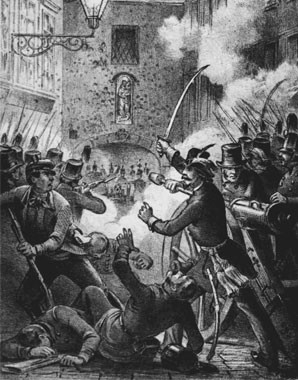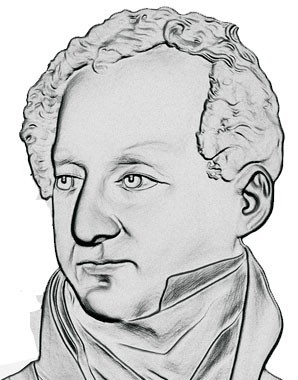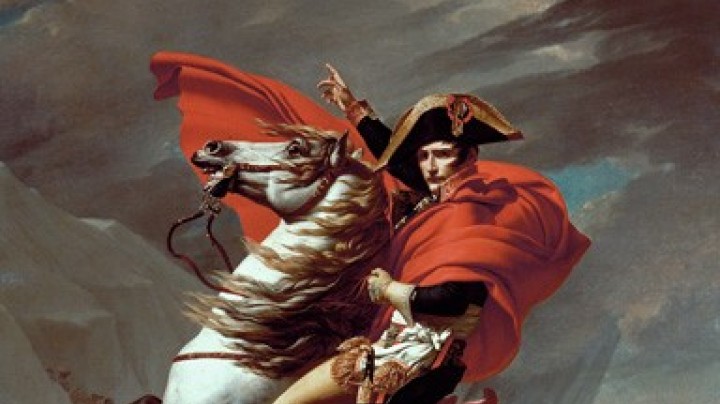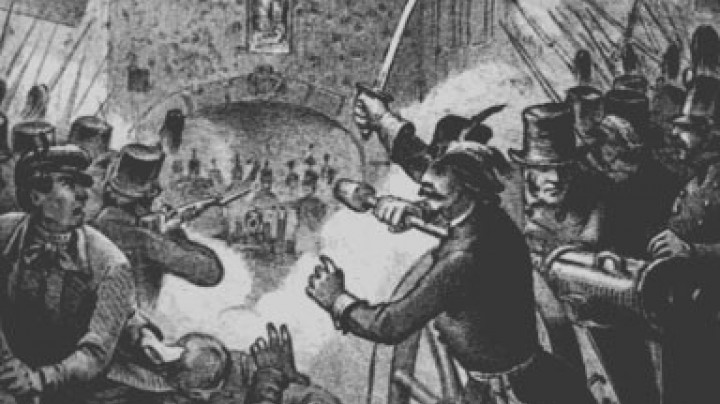An atmosphere of upheaval in the Monarchy
The idea of the ‘bourgeois subject’ shook the foundations of the monarchy. In the nineteenth century new ideals began to assert themselves against the old ones.
The 1848 cartoon, ‘How the Old Age gladly lost its pigtail to the spirit of the New’ portrays an old man with a pigtail, a fashion that no one had by then worn for many years. With his knee-breeches and his white powdered wig, he represents the social system of the eighteenth century that was dominated by the nobility and Habsburg rule. Originating in the French Revolution of 1789, the idea of the ‘bourgeois subject’ had spread widely throughout Europe. A time had arrived in which it seemed possible to rebuild the world and, above all, to share in that process. The caricature depicts a young student cutting off the old man’s pigtail and symbolizes the tension between the old system and the new ideals that people were ready to fight for. The revolutionary slogan of ‘liberté, égalite, fraternité’ from 1789 came to embody a middle class that was gaining in strength. Citizens, students and workers demanded a legal framework, a constitution, that would set out their rights and duties, thus liberating them from the arbitrary powers of the ruling class. The absolutist Habsburg rulers long tried to ignore it, and yet the vehement pressure from the people for political involvement culminated in outbreaks of violence in 1848 in many European cities such as Paris, Prague, Bratislava and Vienna.
Having thus taken root, the concept of the ‘bourgeois subject’ shook the very structure of the absolutist Monarchy. Frequent changes of rulers and ministers together with external and internal political problems accompanied by territorial losses and conflicts between nationalities were sure signs that the Monarchy had become unstable.

















